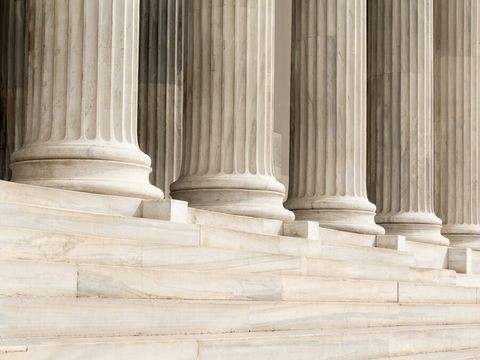MoCRA Under the Trump Era: A Look at FDA's Monitoring and Enforcement Two Months In
Client Alert | 3 min read | 03.27.25
Despite other sweeping changes to the federal government under the Trump administration, the Modernization of Cosmetics Regulation Act of 2022 (MoCRA), passed under former President Biden, remains good law. Below, we report on recent trends in FDA’s implementation and enforcement of MoCRA in the early months of Trump’s presidency.
FDA is continuing to monitor the cosmetic industry’s compliance with MoCRA. On March 13, 2025, FDA released data summarizing the number of active facility registrations and product listings submitted pursuant to MoCRA’s requirements.
As we have previously reported, MoCRA requires the “responsible person” (i.e., the manufacturer, packer, or distributor of a cosmetic product whose name appears on the label) to register their facilities with FDA and to update that registration every two years. The “responsible person” is also required to submit a list of each marketed cosmetic product, including the product’s ingredients, to FDA, with annual updates.
The new data shows that as of January 1, 2025, FDA has received 9,528 active facility registrations and 589,762 unique product listings, through either Cosmetics Direct, the Electronic Submission Gateway, Structure Product Labeling software, or paper submissions. Before MoCRA, FDA received voluntary cosmetic product filings and establishment registrations through the Voluntary Cosmetic Registration Program (VCRP). Under the VCRP, which ran from 1972 until it was sunset on March 27, 2023, the number of active establishment registrations was only 5,176, and the number of active product listings was only 35,102.
Notably, the number of facility registrations submitted pursuant to MoCRA’s mandate is almost twice the number of registrations voluntarily submitted through the VCRP. And the number of active MoCRA product listings is more than sixteen times the number of VCRP product filings, suggesting that the largest cosmetics facilities may not have been participating in the VCRP. This large increase in facility registrations and product listings also indicates the effect of a mandatory program when compared to a program that relies on voluntary participation.
As part of this same report, FDA also published information on the number of registered facilities in each U.S. state and territory as well as the number of foreign registered facilities in each country as of January 1, 2025. The total number of registered facilities in the U.S. is 1,800, with the highest number of registered facilities in California (373), Florida (201), New Jersey (144), Texas (120), and New York (118). Accordingly, these states likely are, and may continue to be, focal points for consumer litigation related to cosmetics. The foreign countries with the highest number of registered facilities are China (4,260), South Korea (617), India (309), Italy (273), and France (245). With more than double the number of domestic registered facilities, this report indicates that China has a dominant role in the U.S. cosmetics market.
In addition, during the first two months of the Trump administration, FDA’s enforcement of MoCRA followed a similar pattern as the prior administration. During this time, FDA again warned drug manufacturers of potential MoCRA violations, issuing warning letters to three entities. Specifically, FDA warned each drug manufacturer that some of the products they manufacture may be regulated as cosmetics and that, as a result, their facilities may be subject to requirements under MoCRA.
While uncertainty remains regarding how the Trump regulatory agenda and priorities may impact further implementation and enforcement of MoCRA, the recent data report and warning letters indicate that, at least for the time being, FDA is continuing to monitor for compliance with MoCRA in a manner consistent with its efforts during the Biden administration. Importantly, MoCRA’s provisions remain in full force and effect, and thus far, the Trump administration has not taken steps to alter these requirements. We will continue to analyze and report on MoCRA developments going forward.
Contacts
Insights
Client Alert | 5 min read | 12.12.25
Eleventh Circuit Hears Argument on False Claims Act Qui Tam Constitutionality
On the morning of December 12, 2025, the Eleventh Circuit heard argument in United States ex rel. Zafirov v. Florida Medical Associates, LLC, et al., No. 24-13581 (11th Cir. 2025). This case concerns the constitutionality of the False Claims Act (FCA) qui tam provisions and a groundbreaking September 2024 opinion in which the United States District Court for the Middle District of Florida held that the FCA’s qui tam provisions were unconstitutional under Article II. See United States ex rel. Zafirov v. Fla. Med. Assocs., LLC, 751 F. Supp. 3d 1293 (M.D. Fla. 2024). That decision, penned by District Judge Kathryn Kimball Mizelle, was the first success story for a legal theory that has been gaining steam ever since Justices Thomas, Barrett, and Kavanaugh indicated they would be willing to consider arguments about the constitutionality of the qui tam provisions in U.S. ex rel. Polansky v. Exec. Health Res., 599 U.S. 419 (2023). In her opinion, Judge Mizelle held (1) qui tam relators are officers of the U.S. who must be appointed under the Appointments Clause; and (2) historical practice treating qui tam and similar relators as less than “officers” for constitutional purposes was not enough to save the qui tam provisions from the fundamental Article II infirmity the court identified. That ruling was appealed and, after full briefing, including by the government and a bevy of amici, the litigants stepped up to the plate this morning for oral argument.
Client Alert | 8 min read | 12.11.25
Director Squires Revamps the Workings of the U.S. Patent Office
Client Alert | 8 min read | 12.10.25
Creativity You Can Use: CJEU Clarifies Copyright for Applied Art
Client Alert | 4 min read | 12.10.25
Federal Court Strikes Down Interior Order Suspending Wind Energy Development





